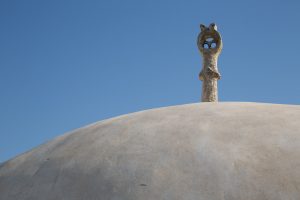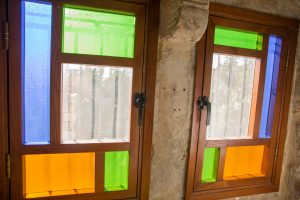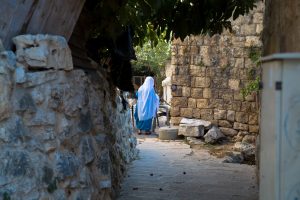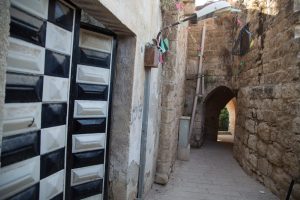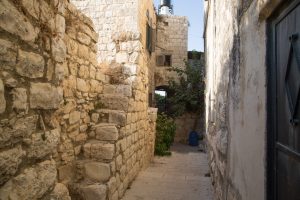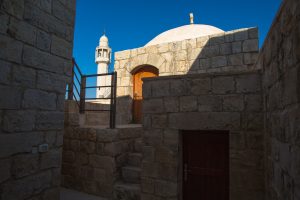By Bassam Almohor
In the heart of the central Palestinian heights lies Deir Istya in the midst of a sea of evergreen olive groves. Deir Istya lies 440 meters above sea level and is located some 15 kilometers southwest of Nablus and about 25 kilometers north of Ramallah as the crow flies. Deir Istya was part of the Nablus governorate until 1995, when the Palestinian cabinet named Salfit a governorate and included Deir Istya within its boundaries.
(Location: 32.1307667, 35.1402191)
During the Ottoman period, it was considered one of the important Palestinian villages, on a par with Arrabeh, Sanur, Jamain, Deir Ghassaneh, Ras Karkar, and Abu Ghosh, among others. But what is unique about Deir Istya is the well-preserved old center that dates back to the Mamluk era during the reign of Sultan Barquq in the fourteenth century. Potsherds from the Iron Age II and Crusader/Ayyubid periods have also been found. Deir Istya is also known for its rich and plentiful olive oil, surrounded as it is by an abundance of olive groves.
Deir Istya was also one of the throne villages during the Ottoman Empire. An Ottoman ruler took the village as a center for government and ruled several villages in the surroundings, basically to collect taxes and keep order. The old town has four well-kept entrances where defense structures are visible even today. A modest, round tower, a low arch, a water well, a stable, and a guesthouse were built to cater for guests and to watch for enemies. Inside the old town live around 30 families at present. With narrow alleyways, roofed passageways, arched doorways, outdoor stairs, wooden doors with symbols and inscriptions from the past, and well-cut stones, the old town inspires awe. It invites you to relive the Syrian soap-opera Bab al-Hara, with its architecture, structure, and houses.
In the center of the old town lies the newly renovated palace, the palace of Abdel-Rahim Abu Hijleh, which dates back to the late Ottoman period. The palace has a large space of two floors, and in other parts, three floors of differing heights. There are 10 rooms of various sizes, and all have vaulted ceilings. It was the seat of government, the throne, where the governor resides, and included the judge’s room with a tunnel-like entrance for convicts, thick walls with space for the governor’s cold-storage needs, and above all, very small cells. On the eastern roof is a small dome topped with a mysterious symbol that looks like a face: a circle with three triangles and two ears or horns on top of the circle with three dots. According to Said Abu Hijleh, a business entrepreneur from the village, the three triangles represent the three products that the village is famous for: wheat, lentils, and olive oil.
The palace has been turned into a guesthouse, a café, and a business center equipped with everything you need, and it is open around the clock. Park your car at Martyrs Square at the western entrance, walk the narrow alleyways straight ahead until you reach the Muraba’a. Turn left, and you will see the palace to your right with a big brown sign.
For more information and guidance, please contact Nijim Abu Hijleh at 059 592 6000 or nijim.woodwork@gmail.com.
Bassam Almohor can be reached at almohor@gmail.com, 059 753 4681, or through Facebook: @palestinestreetlife.

